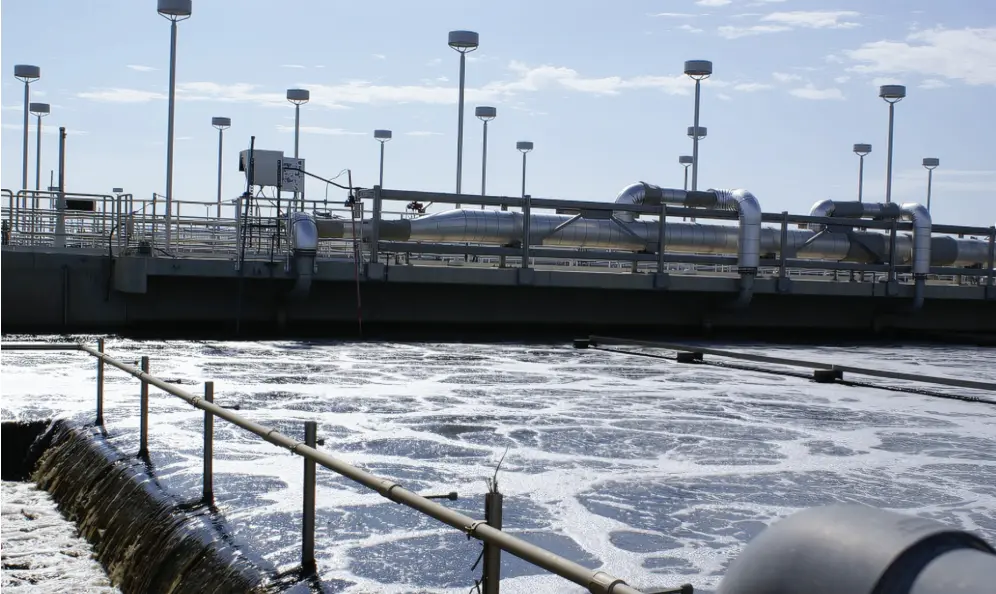
Wastewater Works Stories:
See how the data is being used across the country.
Informing public health decisions now and in the future.
Wastewater monitoring is proving its value as an essential tool for public health officials and pandemic preparedness. We have advanced the science of wastewater-based epidemiology to provide reliable, timely data on eleven infectious diseases and our tools can be adapted quickly to test for new, emerging diseases. Below you’ll find stories that illustrate that wastewater monitoring works and why America should put a sustainable, national system on the map.
Stories
Las Vegas, Nevada
A big city like Las Vegas, that has a large population of residents and a high volume of visitors, needed a public health tool that could flex to fit its changing population. The Southern Nevada Health District (SNHD) began using wastewater surveillance early in the COVID-19 pandemic. In May 2023, they partnered with WastewaterSCAN to complement and expand their existing program. Our work together has proven to be valuable in communicating more effectively to populations most at risk and validating the relative success of interventions.
SNHD sees wastewater monitoring as a flexible, easy-to-understand public health tool that works with traditional surveillance methods, like clinical testing data, hospitalizations, and mortality figures. Combining wastewater data with other data sources has helped them prepare for large destination events in Las Vegas.
Kimberly Franich, MPH, Communicable Disease Manager, Southern Nevada Health District
“Our communities are aware of the science. They are very interested in how the data is being used as a public health tool. That’s really helpful at an individual level, as citizens look to the dashboard to make personal decisions, and by public health departments as they make recommendations for the community.”
Dr. Cassius Lockett
Deputy Director Health Officer Operations Southern Nevada Health District
“We have pivoted exclusively to relying on wastewater epidemiology [for monitoring SARS-CoV-2] to guide us in the future.”
Dr. Cassius LockettDeputy Director Health Officer Operations Southern Nevada Health District
Jupiter, Florida
When wastewater data in the Loxahatchee River District revealed a strong correlation between COVID-19 concentrations and clinical cases, Kenneth “Bud” Howard got the word out. Now wastewater monitoring is part of everyday life in Jupiter, and local media publish regular reports on infectious diseases in the area.
The data has become a go-to resource for community members to access timely, easy-to-understand, and reliable information about infectious diseases to inform decisions they make that impact their health.
Bud Howard, Director of Information Services, Loxahatchee River District
“You saw it clear as day in the data, a week or 10 days ahead of the clinical results. You saw the spike of illnesses coming.”
Bud Howard
Director of Information Services, Loxahatchee River District
“As the data just pour out, we showed them, ‘Look at this strong correlation between the high concentrations we saw in the wastewater and the clinical cases.’ We wanted to provide this information to the entire local community.”
Bud HowardDirector of Information Services, Loxahatchee River District
Dallas, Texas
For the top public health official in Dallas County, wastewater monitoring is part of a modern, integrated public health system. The science has become a reliable data source for the county, providing critical insights to inform public health guidance. In addition to using wastewater data to monitor for COVID-19, the Dallas area used the data they were getting in the summer of 2023 to mobilize local public health teams and resources in advance of the national mpox outbreak.
Wastewater monitoring is a critical component in a network of public health data sources that Dallas County relies on, including electronic reports from labs, electronic case reports from hospitals, mortality data from the vital records department, and immunization data from the state.
“We are doing a lot of data modernization right now—a whole integrated system. We’re bringing it all in, matching and merging, monitoring. Every Monday we have a command team call where we ask, ‘What are you seeing in the wastewater, in the ERs, on the phone banks, in the syndromic surveillance and so forth?’ Just always trying to stay ahead of things.”
Dr. Philip Huang
Director and Health Authority for Dallas County, Health and Human Services Department
“Wastewater testing is an important tool behind the recommendations that I make to the commissioners...It's very straightforward.”
Dr. Philip HuangDirector and Health Authority for Dallas County, Health and Human Services Department
Snapshot Stories from the Field
Wastewater Monitoring
Through the collaborative efforts of a network of nearly 150 wastewater treatment plants, public health officials, and community leaders, the value of a national wastewater monitoring system is even more clear.
Early Detection
Wastewater data can serve as an early warning tool, detecting diseases before they appear in clinical testing.
Tracking with Clinical Data
Wastewater data tracks closely with clinical testing data.
Extremely Small Sample Size
With a pea-sized sample of wastewater solids, we can identify a handful of infections per 100,000 people served by a wastewater system.
Data from the Whole Community
Wastewater monitoring generates community-wide data on infectious diseases with no extra effort from the public – anyone who uses the sewer system is included in the data.
39M+ People Represented
The Heart of a National System
Looking ahead, a national wastewater monitoring system will rely on a larger network of mission-driven people around the country – just like the people that WastewaterSCAN has had the privilege of working with over the past two years. We thank them for their dedication and drive to protect public health. Please get to know your local wastewater treatment professionals and public health officials. They are essential to helping us prepare for future pandemics.







